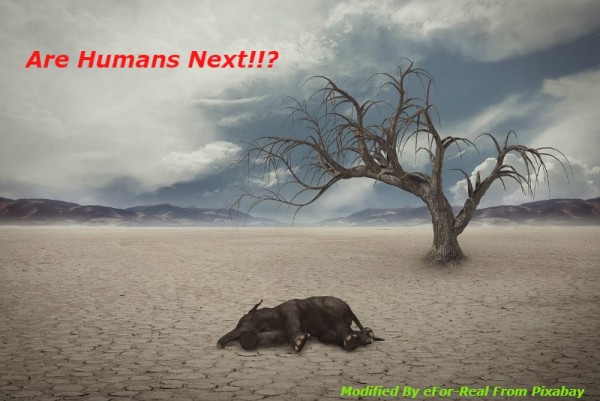

November 21, 2019 – Will humans turn out to be the next dinosaurs to go extinct? This is a plaguing question because of factors like the rising human population, in tandem with increasing industrialization, which is expected to continue their growth pattern, as the latter is needed to support the population growth. But these same drivers will also bring about a huge environmental impact on planet earth, and there are reasons to believe it could threaten our survival.
We can, however, take steps to ameliorate the negative impact and save the future, to prevent a dinosaur extinction like event. Two such areas where positive steps could yield fruits are in the fight against the dwindling insect populations and the greenhouse gases that are causing global warming.
As per data from 2015, the global temperature has risen by 1.8F above pre-industrial levels. This is also an unprecedented rise in temperature in the last 65 million years. As a result, cold regions are now getting warmer with heat trapped by greenhouse gases such as water vapor, methane, and ozone.
Sadly, global warming has taken on a bad name, and some governments consider the topic as a way for the proponents of climate change to receive grants, or as an unnecessary concern. Some schools, around the world, have even removed climate change from their curriculum.
And this is unfortunate, given the obvious facts that support climate change. These include shifts in weather patterns, an increase in rainfall intensity and flooding, and noticeable patterns of storms, snow, and drought. Malaria, a disease of warmer climates, is becoming a risk in cold regions as well.
A red alert has been sounded by some scientists, who say we are only one degree Celsius (1oC) away from a condition called ‘hothouse earth’. This will make equator regions uninhabitable, sea levels will rise by 197 feet, drowning coastal cities, and permafrost will melt at accelerated pace releasing who knows what, e.g., viruses that have been frozen for thousands of years. The first mammal, a brown rat called Australian Bramble Cay Melomys, has relatively recently gone extinct due to sea-level rise.
The second area where positive steps could be taken is the dwindling Insect population, which some skeptics also believe is not happening. Well, they can tell it to the bees. A sixth mass extinction could be around the corner, and the insects seem to be the worst hit. There is now an annual loss of 2.5% of the insect population, which is troubling because Insects are vital for the functioning of all ecosystems as they serve as food, pollinators, and recyclers. Their extinction will impact birds, amphibians, fish, reptiles, and humans too. Another cause of insect extinction is the use of chemicals on farmlands.
Fortunately, these consequences can be reversed as they are man-made. What’s needed is quick action to reduce the rate at which these factors: chemicals, global warming, and overpopulation are affecting the environment and the insect populations.
Treaties like the Kyoto protocol or Paris agreement are great, but not sufficient. What’s required is action on the part of everyone, as these issues impact the entire planet. Even a small step can make a big difference in the future of our planet.
For more information, use the media contact information below.
Media Contact
Company Name: EFor-real
Contact Person: Emilie Clark
Email: Send Email
Phone: 7139928799
City: Houston
State: TX
Country: United States
Website: https://themarketplan.com/
